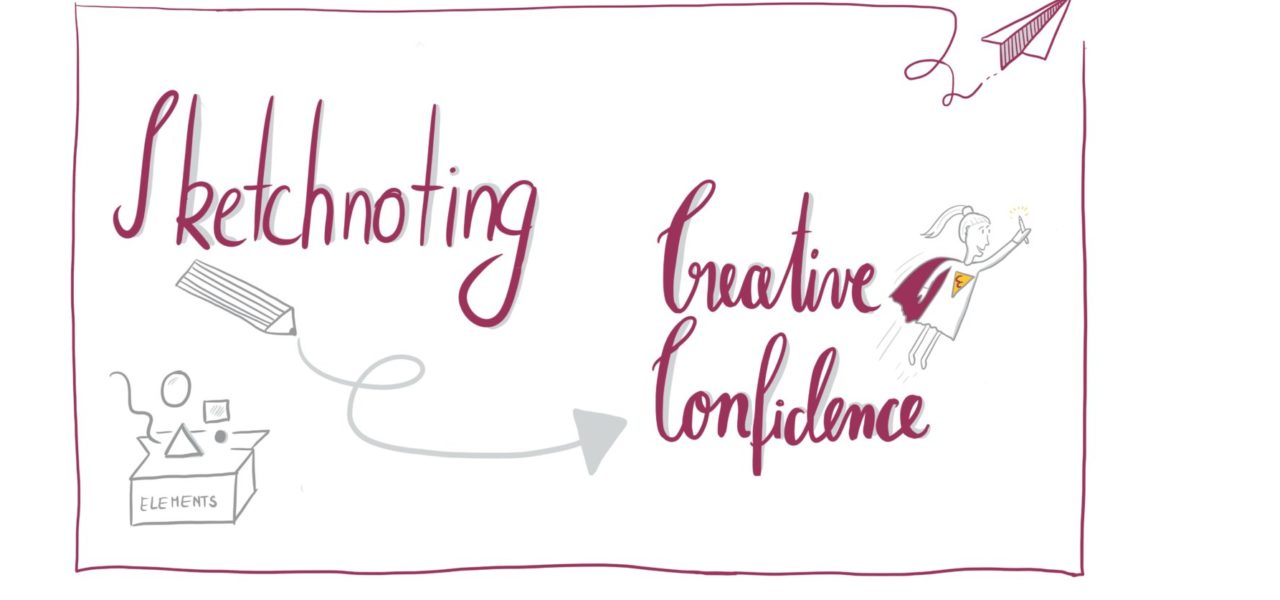
Sketchnoting: A way to more creative confidence
Sketchnoting for more creative confidence
“I can’t draw” is one of the most frequent reactions I get when I ask my workshop participants to visualise their ideas or thoughts. This statement often goes along with “I am just not the creative type of person”. Thus, not being able to sketch seems to be directly linked to the perception of lacking any form of creativity.
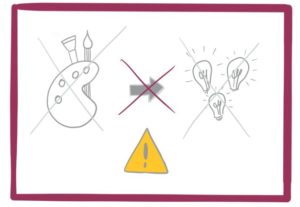
Tom and David Kelly coined the term “creative confidence” and in their book (bearing the same name) they describe how to unleash the creativity that lies within each and every one of us. I am not suggesting that being creative means that one has to be able to draw or sketch, but I believe that learning visualisation skills can be a first step to trusting in ones creative ability.The funny thing is, that we actually all had this creative confidence when we were young. We were born with it. The same counts for our ability to draw!
In his TED talk “Do schools kill creativity?” Ken Robinson argues that “we don’t grow into creativity, we grow out of it. Or even better said we get educated out of it”. However, according to Robinson (and I mirror his opinion), “creativity is as important as literacy and we should afford it the same status”.
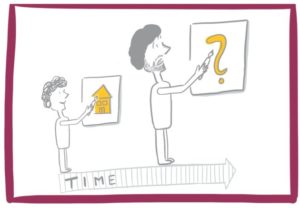
Interestingly, before children learn about the alphabet and begin to write, drawing plays an important part in the way they express their ideas and communicate with others. Nevertheless, we move away from drawing as a communication tool as we grow up. If we try to start sketching again in our adult lives, it is like learning a new language with its own alphabet. It may not be easy for everyone, but it is extremely valuable to pick up this lost skill for the sake of bringing innovation into the world.
In this article I want to share my ideas around sketchnoting in a business context:
- What are sketchnotes?
- Why does it make sense to draw in a business context?
- and most importantly: how do you start with sketchnoting and building trust in your creativity?
What are sketchnotes?
Sketchnotes (sketches + notes) are notes supplemented with simple, mostly two dimensional elements. In sketchnoting complex concepts are visualised by combinations dots, lines, squares, triangles, and circles. They directly “talk” as everyone will immediately understand their elementary forms, and when accompanied by some powerful words.
Why does it make sense to draw in a business context?
1.) Common understanding
Especially when working in teams visuals help to get a common understanding about the topic discussed. Verbal language is only one way of communicating and as it is well known words can be understood and interpreted in many different ways. Supporting a thought with a visual makes content more accessible to other people. Above all in an international context it lowers language barriers.
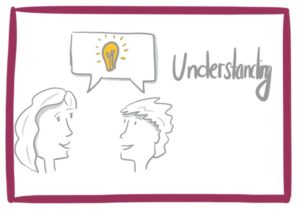
2.) Focus
As research suggests, laptop note takers have the tendency to transcribe what they hear instead of processing and reframing the information. In contrast, when you are sketchnoting you are basically forced to focus and synthesise the important information.
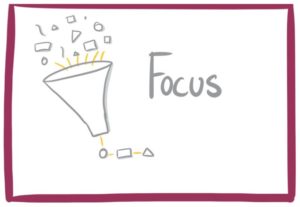
3.) Retaining information
Combining words with visuals makes it easier to anchor information in our memory. There is actually an interesting TED Talk about this topic by Graham Shaw. In his interactive talk you experience how much more you can remember when using visuals. Further, research by the University of Plymouth shows that we can recall information better when sketching.
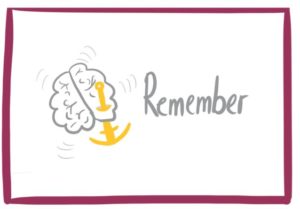
4.) Appealing documentation
In a pragmatic point of view sketchnotes are simple a nice and interesting looking way of documenting content and information. We all know boring meeting notes which in the end nobody wants to look at anymore.
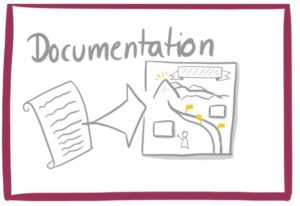
5.) Brain-friendly
Our brain is lazy and it thinks better with images. In fact, it takes the brain less effort recognising a visual than it does reading a word. Apparently the brain processes visual information 60,000 times faster than text.
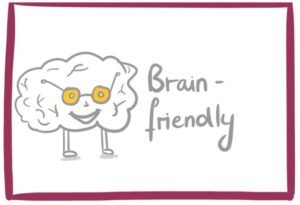
6.) Spark new ideas
I have made the experience that seeing sketches also inspires new ideas. Watching someone visualising enhances cooperation: colleagues can quickly build on a concept by co-drawing, they associate faster and come up with additional ideas.
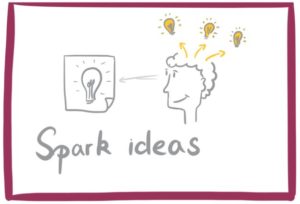
7.) Fun & space to experiment
Sketchnoting is also simply a lot of fun!!! Since most people are not excellent drawers, and it is mainly about understanding rather than perfection, it gives room to try things out, to approach topics from a different perspective. In short: it creates space for experimentation. And believe me it also feels like a success if you are able to communicate visually on paper.
There are many more reasons why sketchnoting is useful. Here you find some more.
Nevertheless, the big question remains: How to start?
First pencil stroke
Often the biggest barrier is that empty piece of paper in front of you. It looks so clean and perfect, that the first pencil stroke seems to be ‘ruining’ it. There are two recommendations I give my workshop participants to break the ice with the blank paper:
- Sketch something very simple in one of the corners. It can either be a smiley face, a normal stroke, you can also draw a frame around the paper or maybe you just want to write the date. The important thing is to start putting the pen on the paper.
- Put yourself in the situation when you were 5 years old. Remember that one drawing you always painted, maybe it was a house, a car, your family. Whatever it was, sketch it the same way you did when you were 5 years old.
After having sketched the childhood painting, one can really see the value of simple drawings:
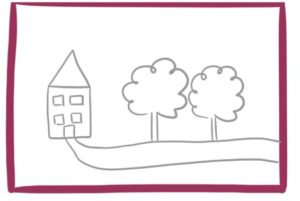
Sketchnoting is not about creating a masterpiece of art, but about finding new ways to communicate one’s ideas. It is about creating something memorable and simple. Therefore, most of the time it is enough to draw in 2 dimensions.
Decompose complex ideas in simple elements
Parting from the simplistic children drawing you can see that sketchnotes are actually decomposing complex figures in simple elements. For sketchnotes you need 5 elements in total:
- Dot
- Lines (Straight, crooked, curvy)
- Circle
- Triangle
- Square

Try it out and draw a flower, a car, a balloon and a clock with these simple elements.
Make it look professional in just two easy steps
In order to make your sketchnotes look more vivid you can add shadows. Just use a somewhat thicker light grey pencil and place an extra line in the inside or outside of an element.
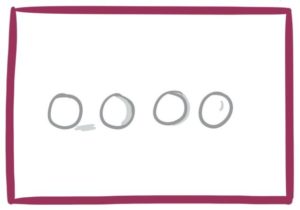
Generally it makes sense to think about your colour palette. It will help others to focus more on what is fundamental and understand connections better. Besides it looks more professional when you choose just 2 or 3 colours in a well-considered way. Decide upon a uniform colour code for titles, subtitles and explanatory sentences and for essential images and less important visual elements. You might want to even use a special colour to highlight the most important parts.
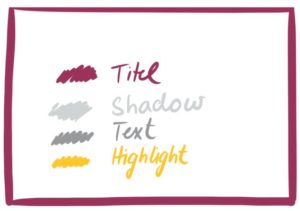
Find the right balance between text and image
Sketchnotes consist of both text and visualisation. So what is the best ratio? Let’s say 80% visual, 20% text. But this is not scientifically proven :).
Texts should preferably be very short: just use keywords, and add bullet points if you want to highlight several aspects. Use arrows and lines or choose positions well in order to symbolise connections or orders. If possible and relevant, write down significant quotes as well.
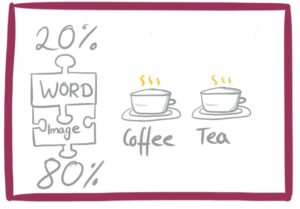
Practice, practice, practice
There are many good books out there that help you to get you going with your visual library. For example the bikablo books, or the book UZMO. Do not hesitate to simply start copying what you see in the books. This will help you to get started and with practice you will develop your own style.
I strongly believe that sketchnoting is very powerful, for communication and innovation, but also for ones own creative confidence. Believe in yourself that you can relearn this and start today. You were born with it!
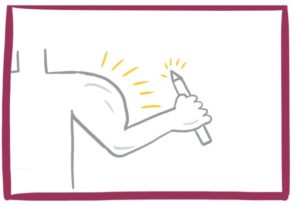
Mira Vanessa Gampp